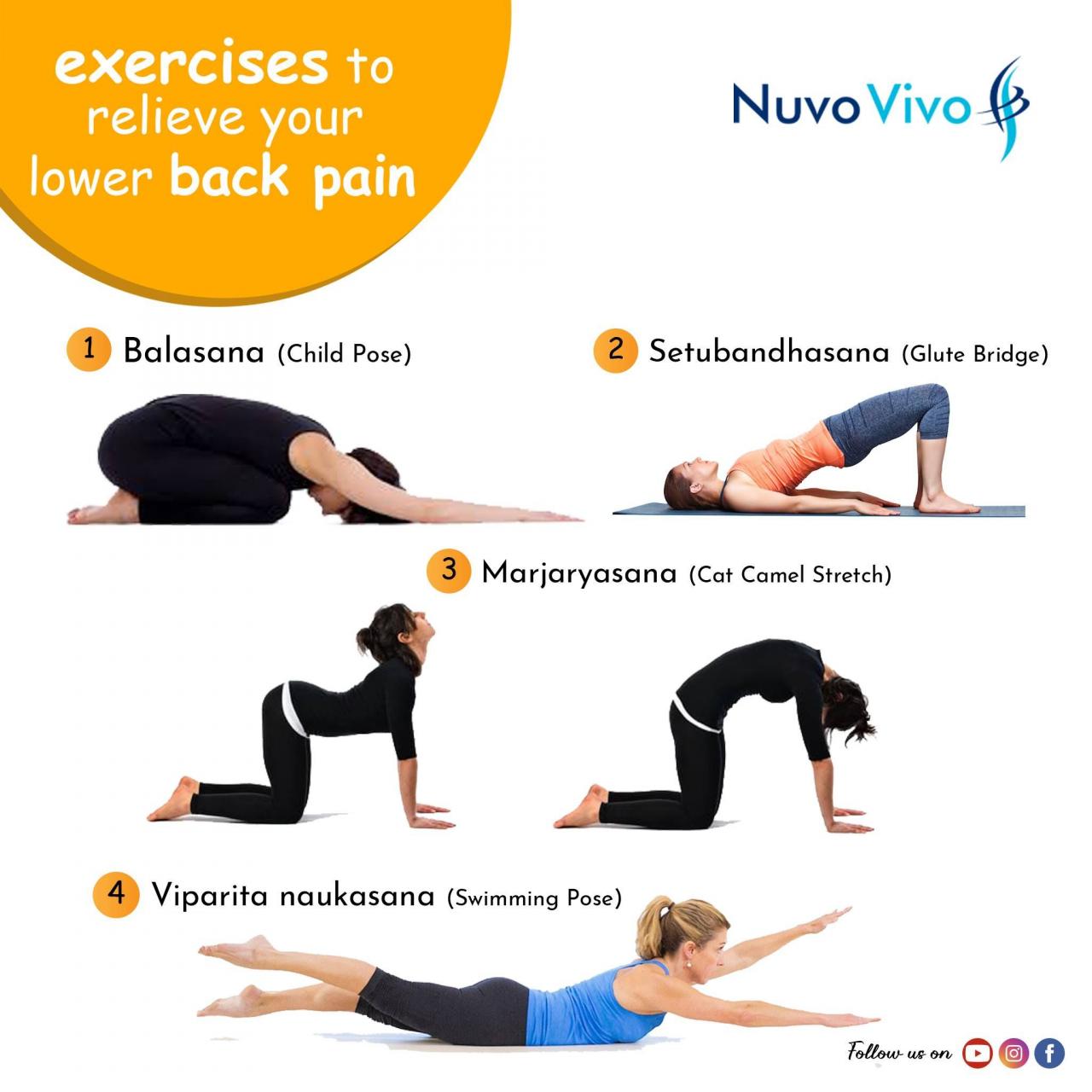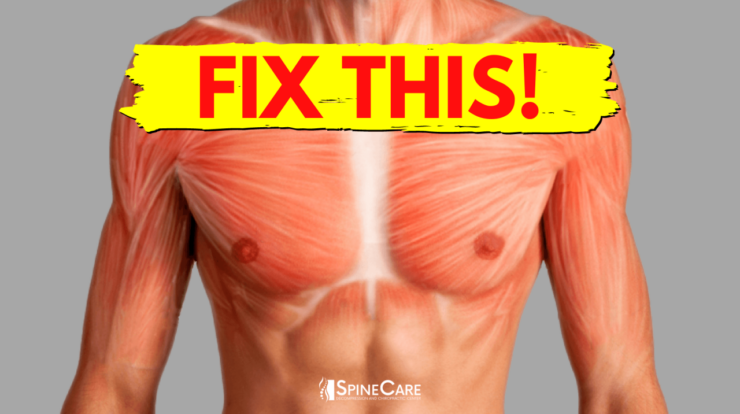
Discover the transformative power of lower back exercises at home. Whether you’re a seasoned athlete or a novice seeking relief from nagging pain, these exercises offer a comprehensive solution for improving posture, reducing discomfort, and enhancing overall well-being.
Our expert guide provides a detailed exploration of lower back anatomy and biomechanics, empowering you with a deep understanding of your body’s structure and function. By delving into the causes of lower back pain and the crucial role of muscles, ligaments, and tendons, you’ll gain valuable insights into maintaining a healthy and pain-free back.
Lower Back Anatomy and Biomechanics

The lower back, also known as the lumbar spine, is a complex and crucial part of the human musculoskeletal system. It consists of five vertebrae (L1-L5), which are stacked one on top of the other and separated by intervertebral discs.
These discs act as cushions, providing flexibility and absorbing shock. The vertebrae are connected by ligaments, which help to stabilize the spine, and muscles, which provide support and movement.The lower back plays a vital role in supporting the weight of the upper body, enabling movement, and protecting the delicate spinal cord.
It is also responsible for maintaining balance and posture. However, due to its complex structure and frequent use, the lower back is prone to pain and injury. Understanding the anatomy and biomechanics of the lower back is essential for preventing and managing back pain.
Common Causes of Lower Back Pain, Lower back exercises at home
Lower back pain is a common complaint, affecting up to 80% of the population at some point in their lives. There are various factors that can contribute to lower back pain, including:
- Muscle strain or sprain
- Ligament injury
- Disc herniation
- Spinal stenosis
- Osteoarthritis
- Sciatica
- Poor posture
- Obesity
- Smoking
- Age
Understanding the potential causes of lower back pain can help individuals identify and address risk factors, thereby reducing the likelihood of experiencing pain.
Role of Muscles, Ligaments, and Tendons in Lower Back Support
The lower back is supported by a complex network of muscles, ligaments, and tendons. These structures work together to provide stability, flexibility, and movement.
On this special day, express your love and gratitude with heartfelt happy mothers day wishes mom . Whether you choose to send a thoughtful card or simply share a warm embrace, make sure to show your appreciation for all that mothers do.
- Muscles:The primary muscles supporting the lower back are the erector spinae, which run along the spine, and the abdominal muscles, which form the core. These muscles help to maintain posture, stabilize the spine, and control movement.
- Ligaments:Ligaments are tough, fibrous bands of tissue that connect the vertebrae and help to stabilize the spine. The main ligaments in the lower back are the anterior longitudinal ligament, which runs along the front of the spine, and the posterior longitudinal ligament, which runs along the back of the spine.
- Tendons:Tendons are tough, fibrous cords of tissue that connect muscles to bones. The tendons in the lower back help to transfer force from the muscles to the spine, enabling movement.
Maintaining the strength and flexibility of these structures is essential for a healthy lower back.
Wrap-Up

Embark on a journey of lower back rejuvenation with our comprehensive workout routine, tailored to all fitness levels. Experience the benefits of strengthening core muscles, stabilizing the spine, and improving flexibility. Whether you’re looking to alleviate chronic pain, enhance mobility, or simply maintain a healthy back, this guide has everything you need to achieve your goals.
Maintaining strong back muscles is crucial for overall health and mobility. Stiff and tight muscles can contribute to back pain, so it’s essential to incorporate regular stretching and strengthening exercises into your routine. To celebrate the special bond between mothers and children, consider sending heartfelt happy mother’s day greetings to show your appreciation.
FAQ Corner: Lower Back Exercises At Home
How often should I perform these exercises?
Aim for 2-3 sessions per week, with rest days in between.
Is it safe to do these exercises if I have a history of back pain?
Consult a healthcare professional before starting any new exercise program, especially if you have any existing injuries or conditions.
Understanding how can stiff and tight muscles result in back pain? can help you take proactive measures to prevent or alleviate discomfort. Additionally, incorporating targeted exercises for lower back fat into your fitness regimen can effectively reduce excess weight in that area.
Can I modify the exercises to suit my fitness level?
Yes, many of the exercises can be modified by adjusting the intensity, range of motion, or using resistance bands or weights.







